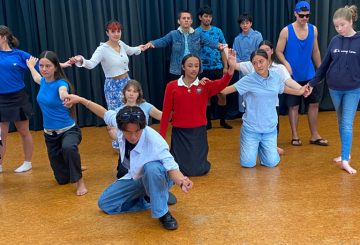言語はいつ絶滅し、いつ休眠状態になるのでしょうか。これは多くの言語学者が取り組んでいる問題です。ネイティブスピーカーがいなくなった言語、つまり子供の頃に学んだ言語は、しばしば「死んだ」と見なされます。しかし、必ずしもそう簡単というわけではありません。
チャタム諸島のモリオリ語を例にとってみましょう。タ・ロ・モリオリ語を母国語として最後に話したのは20世紀初頭に亡くなったが、この言語には豊かな歴史的記録があり、テ・レオ・マオリ語と多くの類似点を共有している。
これがきっかけで、オークランド大学ではホコテヒ・モリオリ・トラストと共同でプロジェクトが始まりました。目標は、モリオリ語の既存のテキストをすべて書き起こし、翻訳し、完全に理解することです。目的は、この言語の文法特性を理解し、最終的に言語文法を作成することです。
モリオリ人は、ニュージーランドの東海岸から約800キロ離れたレコフ、つまりチャタム諸島に住んでいます。彼らには独特の文化と言語があります。しかし、1800年代にヨーロッパ人がやって来て、続いてニュージーランドのアオテアロアから2つのマオリ族がやってきたため、モリオリの人口と言語は急速に減少しました。
それにもかかわらず、モリオリ語はさまざまな形で保存されており、言語復興の理想的な候補となっています。これには、1889年に書かれた小さな辞書、短編小説、1862年にモリオリ族がニュージーランド知事に宛てた請願書などがあります。
言語を復活させることは野心的に思えるかもしれないが、それは以前からあったことだ。アメリカ合衆国マサチューセッツ州のワンパノアグ語は、1890年代に最後の話者を失いました。しかし、政府の記録や宗教文書など、書かれた文献の膨大なアーカイブは入手可能でした。1990年代、ワンパノアグのコミュニティの一員がこれらのテキストの分析を開始し、辞書と文法を構築することができました。2014 年までに、流暢なネイティブスピーカーとみなされる子どもは 50 人になりました。
現在世代から世代へと受け継がれていない言語を指す場合、「睡眠言語」の方が正確な用語である場合もあります。復活した言語は、必然的に元の言語とは少し異なります。大人がモリオリ語をテキストから学べば、大量の単語や文法構造を身につけることができるだろう。大人から「新しい」モリオリ語を学ぶ子供は、本能的にそのギャップを埋めるだろう。おそらく、マオリ語や英語など、聞く他の言語から学ぶことが多いだろう。
ですから、タ・モリオリ語は死んだとも絶滅したとも言えません。というのも、それが再び聞かれる可能性は十分にあるからです。今でもモリオリの言葉、フレーズ、歌は、モリオリ自身がチャタム諸島のあちこちで使っている。眠っていると言ったほうがいい。そしていつか起こせるといいね。




























































